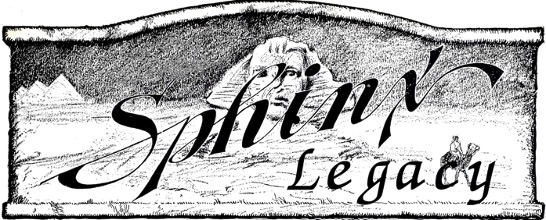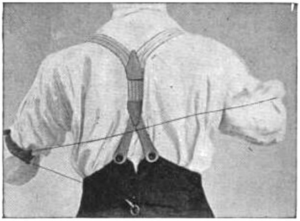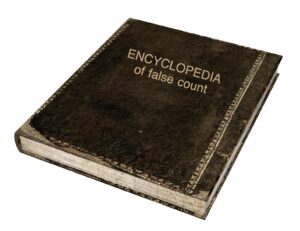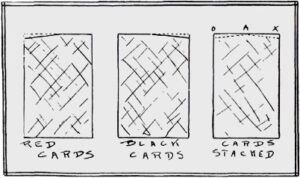“Sphinx Legacy” 編纂記・番外編その1
 加藤英夫
加藤英夫
[2022年1月24日追記]
2022年1月21日にアップロードされたMN7の”Sphinx Legacy”編纂記の第44回においては、DeKoltaの’Vanishing Lady’のことを取り上げました。それを読まれたメイガス師から、DeKoltaは女性を消すだけでなく、女性の上にかけていたショールも消していたということを、MN7代表の中村安夫氏あてに連絡をいただきました。それはSteinmeyerが書いた”Hiding the Elephant”(2003年)に書かれているということでしたので、英語版と日本語版の両方を確認いたしました。日本語版”ゾウを消せ”は、河出書房新社から2006年に発行され、飯泉恵美子さんの翻訳によるものです。両方から関連部分を抜粋引用させていただきます。
One of his greatest creations was the original vanishing Lady illusion, which he performed at Egyptlan Hall. He began by unfolding a sheet of newspaper on the stage一reminding the audience that this prevented him from using a trapdoor-then positioning a small dining chair on top it. His wife was invited to sit on the chair, and he covered her with a long silk shawl. As he gestured, throwing his arms apart,the shawl and the lady instantly vanished. He picked up the chair,folded the paper, and took his bow. A magician who saw him perform this recalled, many years later, how deKolta had carelessly turned his prominent backside to the audience before bending down to unfold the paper. The audience quickly overlooked this sort of coarseness; the trick was a masterpiece.
彼が生み出したオリジナル作品の傑作といえば、エジプシャン・ホールで披露した「消える貴婦人」が挙げられる。まず、折りだたんだ新聞紙をひろげてステージに敷く。これは、観客に落とし戸がないことを見せるためだ。そして、その上に食卓用の小さな椅子をおく。彼の妻を呼んで椅子に座らせ、長いシルクのショールで妻ごとおおう。両腕を広げたとたんショールと妻が消えてしまう。椅子をどけ、新聞紙をたたんでお辞儀をする。このステージを見たあるマジシャンが、何年も経ってから、ドコルタが新聞紙をたたもうとかがみこむときに、観客に飛び出た背中を何ともうっかり見せてしまったと語っている。観客はこの手の粗雑さを簡単に見逃す。傑作な仕掛けだった。
女性にかけたショールも消してしまうことは、”Sphinx Legacy”に引用・収録した”The Wahpenton Times”の記事にも書かれていますが、メイガス師から”ゾウを消せ”に記載されていることを指摘していただいたおかげで、消えたショールがどこに行ったのか、手掛かりがつかめました。
飯泉さんの翻訳はじつに見事な翻訳です。私がよくやるような超訳的な部分は見られず、原文を忠実に訳していながら、違和感のない日本語にされています。それでも’Vanishing Lady’のやり方を知っている私には、ごく一部、このように訳した方が理解しやすいと思われる部分がありました。
上記の翻訳では、原文では’Backside’という単語を’背中’と翻訳されていますが、これは英語に忠実に’お尻’と翻訳した方が事実に近いと思います。もうひとつ’prominent’を’飛び出た’と訳されていますが、’膨らんだ’と訳した方が、私たちマジシャンにはピンときます。DeKoltaは燕尾服を着て演じていましたから、引きネタはテールあたりに引きこんだものと私は想像します。ショールのように大きなものを背中に引きこむのは大変です。
以上まで書いた文章を中村さんあてに送り、読んでもらいました。すると「日本版”ゾウを消せ”には、ショールを袖の中に引きこむと書かれているので、お尻あたりが膨らむと書かれているのは違和感を覚えます」という意見をいただきました。私は「えっ」と思いました。袖の中に引きこむと書かれているに私は気づかなかったのです。もういちど同書を見たら、私は途中までしか読まずに解釈してしまったのです。前述の日本語訳の文章の続きを読んでみましょう。
「消える貴婦人」の模倣作品が、ほどなくヨーロッパとアメリカで出回りはじめた。どうにか人気に応えようとしたドコルタは、自分のツアーを企画したり、別のマジシャンを使ってこの作品をやらせたりした。床に新聞紙を敷くとか、人とショールを同時に消すなどという微妙なコツに悩まされたマジシャンもいた。ドコルクの方法では、燕尾服の下に滑車と紐をうまく仕込む方法を利用していたからだ。紐は通常で三〇センチほどだが、腕の長さまで仲ばすことができる。腕を広げると長いシルクのショールが袖の中に素早く引きこまれる。ドコルクはこれを完璧にやってのけたが、他のマジシャンにとってはまさにこのコツが問題だった。失敗すればパフォーマーの袖口からショールが垂れ下がってしまい、ショー自体がお笑いになってしまう。彼らはショールをはずして婦人が消えてしまったことを見せるだけの方法を選んだ。
たしかに袖の中に引き込まれると書かれています。はたしてSteinmeyerはDeKoltaのプルのやり方を何かの文献で読んだのでしょうか。もしかしたら想像で書いているのではないでしょうか。私は文章全体を読んで、袖口から引きこむというのはおかしいと思いました。ショールを消すときに、”腕を伸ばす”と書かれています。これはプルの紐を引くために必要なことですが、この動作を正確に表現すると、両脇にくっつけていた両腕を水平位置まで急激に上げるということです。それを行えば、両腕はバンザイをしたかっこうになります。すなわちそのとき両方の袖口は観客によく見える位置にあることになります。その状態でショールが袖口に入っていったら、入っていくのが丸見えになってしまいます。
そのようなことを考えて、私はショールは燕尾服の前側からテールの陰、もしくは背中の陰に引き込んだ可能性もあるのではないかと想像します。その方向に飛んでいくショールは椅子の陰になって観客には見えないはずです。
残った問題は、2mもの長さのショールを、両手を広げるだけでどうして燕尾服の中に完全に引き込めたのでしょうか。そのことを可能にするのは、’Vanishing Bird Cage’で説明した、折り返し式のプルを使えばよいのです。そのときの図を再録します。

この図では折り返しは左腕の部分だけですが、右腕の方でも折り返し、紐の先端を体の左側から前に出せば、片腕の動きが30cmであるとすれば、合計120cmの長さを引けることになります。さらに滑車プルを使えば何回でも折り返せますから、もっと長く引くことができます。滑車プルを使うことは、前述のSteinmeyerの文章中にも言及されています。
いずれにしても真実はわかりません。謎は完全に解けるよりも不明のまま残った方が面白い、ということもヒストリアンにおいては、さらに研究意欲を持ち続けるモチベーションになると思います。
[後日追記]
以上のように書いて数日後、そのようなことを書いてこの問題を締めくくるのは、ヒストリアンとして努力不足である反省しました。たとえDeKoltaがショールを袖に引きこんだのか、それとも燕尾服の前面から背後に引いたのかは特定できないとしてもショールを袖に引きこんだとSteinmeyerが指摘した根拠、もしくは原典を調べる努力をするべきであるのです。
“Ask Alexander”において’Vanishing Lady’で検索すると、2600件ぐらいヒットしました。”Ask Alexander”には、検索ワードが含まれる文章の一部も表示されますので、それを頼りに’Vanishing Lady’のプルについて書かれているものはないかと、目をこらして探しまくりました。
最初に見つかったのは、”New Tops”, 1994年12月号の、Robert Olsonが書いている’Men of Magic’というタイトルの記事でした。その中で’Vanishing Bird Cage’にDeKoltaが使ったプルのことに関して、つぎのように書いています。
The complicated “pull” used should be mentioned as in this De Kolta was a past master. He even made the covering cloth for his ‘Vanishing Lady’ up his sleeve.
DeKoltaが’Vanishing Lady’において、袖の中に引きこむプルを使っていたと書いているのです。しかしながらこの記述はSteinmeyerの指摘を証明する次元のものではありません。同じことを指摘しているのです。私の執念はまだ燃えさかっていました。そしてとうとう”Linking Ring”, 1981年1月号に、S.H. Sharpが’David Devant’S Delightful Delusion’というエッセーにおいて、つぎのように書いているのを見つけました。これは大発見です。
Bautier DeKolta had developed his own famous ‘Vanishing Lady’ to extent of making the veil covering disappear simultaneously with the lady. It is explained by Hoffmann in “More Magic” (1890), This as managed by the veil being whipped up the performer’s sleeve by a specially designed pull. But it was very nerve-racking feat to execute convincingly, illusionist sometimes realizing himself to be in the embarrassing situation of finishing part of the ‘vanished’ veil dangling from his sleeve!
そして”More Magic”に書かれている解説を読んだとき、私は感動いたしました。これこそがヒストリアン冥利につきる発見の喜びなのでしょう。Hoffmannがプルについて書いている部分を抜粋して引用いたします。
We have still to account for the disappearance of the veil. In the case of so large an object, the favourite explanation “up his sleeve” appears to be out of the question, but this is precisely “how it’s done.” The operation is effected as follows :
The veil is oblong, about six feet by four, and of very thin soft silk, so as to be capable of being folded or crumpled into very small dimensions. Firmly sewn to its centre is a little “hook.” In an earlier chapter we have described the “Buatier pull,” an ingenious contrivance by which any small object is drawn up the sleeve of the performer. The ordinary length of pull, however, is in this case under two feet, and the veil, even when held by the centre, is nearly three feet six inches. The length of the pull has therefore to be increased accordingly. One end of the cord terminates in a loop which passes over the thumb of the right hand. Thence it is, carried up the right sleeve, across the chest beneath the shirt, and down the left sleeve to the left wrist. Attached to the left wrist by means of a broad leather wristlet, is what is known to mechanics as a “lazy” pulley, i.e., a pulley attached to a jointed swivel, which permits it to take any angle at pleasure. (When there is no pull upon it, it lies flat, hence its peculiar name.) Passing over this pulley, the cord returns up the sleeve, across the chest and down the right arm again, terminating in a second loop. The length is so adjusted, however, that this second loop only reaches the right hand when the arms are flexed, and held close to the body. The moment they are extended it is drawn quite up the sleeve, and rests on the chest. And here it of necessity remains during the greater part of the trick. To enable the performer to get at it when necessary, a piece of very thin cord is threaded through the loop and brought down to the right hand.
Under cover of his final manipulations with the veil (before showing that the lady has departed), the performer draws down the loop. This done, he takes out the pin which secured the veil behind to the cap. Standing sideways (with his right side to the audience) to the chair, he slips loop No. 2 over the hook in the centre of the veil, and at the same time, with his left foot, presses a brass stud (the head of a spring-bolt) immediately behind the leg of the chair on the side on which he stands. This pulls a wire, and thereby withdraws the locking catch of the “head-and-shoulders fake,” which thereupon flies back to its original position behind the chair. Almost at the same moment, he extends his arms, and makes a half-turn of the body, under cover of which the veil disappears, with a “flash,” up his sleeve.
If all goes well, the effect is extremely magical, the visible disappearance of the veil enhancing the marvel of the invisible disappearance of the lady. Both for the ingenuity of its contrivance, and for the personal address evinced in its performance, the trick deserves all praise. But it does not always go well. I have seen it “hang fire” even in the most skilful hands, and I have been assured by performers who have made it a part of their programme, that they never approached this portion of the feat without the dread of a failure. The whole illusion, indeed, is one that demands the minutest finish and accuracy of execution, both on the part of the principal performer and of his lady assistant, combined with absolutely perfect working of the mechanical arrangements. There is risk of failure at every point, but in none so much so as in the disappearance of the veil; and if this is seen (as has now and then been the case) dangling half in and half out of the performer’s sleeve, adieu to the magic of the illusion. In my own opinion, the additional effect of success is not sufficient to counterbalance the risk of failure, and this element of the feat is best omitted.
この解説の中でベールをどけるのは、演者は女性の下手側に横向きに立ってやるとされています。私は女性の背後に立ってやると決めつけてやり方を想像していましたから、その状態からベールが右袖に入るのは、観客に見えてしまうと考えたのです。横向きに立ってやれば、袖の中に入っていくのはそれほどはっきりと見えないのでしょう。
Hoffmannは、このやり方は時々失敗することがあり、成功したときに得られるものよりも、失敗したときに失うものの方が大きいと断言しています。私もHoffmannの意見がもっともだと思うとともに、そもそも成功したとしても、それが一般の観客に対して素晴らしいのかどうか、という疑問を持ちました。Makelyneが警告していた二重現象の典型的な例ではないでしょうか。
[さらに追記]
以上で’Vanishing Lady’のプルの件は、一件落着したと思ったのが2022年1月25日でした。しかし翌日目が覚めたときはたと思い出しました。Hoffmannは、プルの紐はシャツと胸の間を通っていたと書いていたことを。それなら引かれたショールは、シャツと胸の間に入ってくることになります。これは”ゾウを消せ”で暗に指摘されている、ショールが背中に入るという記述と一致しません。
これでまた謎が残りました。ショールが背中に入るのか、それとも胸に入るのか、という謎ではなく、Hoffmannが,DeKoltaの方法を本当に知っていて前述の解説を書いたのか、という謎です。プルでショールを胸の側に引きこむなどということをやるでしょうか。腕の中を通ったショールは背中側を通った方が、スムーズに背中の陰に進行するはずです。胸側に引きこむとしたら、胸は背中よりも膨らんでいますから、それだけショールの進行に摩擦を発生するはずです。しかもショール消失のあと、膨らんだ胸を観客に向けてバウを取ったのでしょうか、はたしてDeKoltaは。
1886年にバリで初演された’Vanishing Lady’を1890年に発行された”More Magic”に、Hoffmannはそのやり方を解説しているのです。DeKoltaがアメリカでこのイリュージョンを演じたのが1891年ですから、ショーで使って話題を盛り上げていたこのイリュージョンのやり方を、DeKoltaはHoffmannに教えたのでしょうか。Hoffmannがやり方を公表したことをDeKoltaは了解していたのでしょうか。
謎は残ったばかりか、どんどん深まっていきます。


